Leopard geckos are popular pets among both children and adults for their caring and gentle nature. These creatures possess teeth, but it’s rare that their bite actually hurts.
As little creatures, they may feel threatened, especially when young or scared by sudden moving objects. Interestingly, when sexually mature at around 9 months, they become more liable to bite, contrasting with active adults over 10 years old who tend to live up to 15 years and become more sedentary.
Why Do Leopard Geckos Bite?
Biting incidents are rare, mostly occurring during feeding time when a finger might be mistaken for a cricket or pinky mouse. A simple warning for beginners is to use gloves or a piece of cardboard to avoid accidental bites. Overall, leopard geckos are great pets and are considered safer and easier to care for compared to other reptiles like monitors or chameleons.
Table of Contents
Yes, a Leopard Gecko Can Bite You. However
When considering the risk of being bitten by a leopard gecko, it’s important to know that it’s relatively low. Being aware of how you’re acting while handling them can prevent a bite from happening, especially in a new household. There’s no need to worry about the reasons behind a bite, as leopard geckos don’t produce venom or toxins, so being poisoned or having your skin swell up or become inflamed is not a concern.
Therefore, medications and treatments are seldom needed, and one can recover typically without much fuss. A bite might hurt a little, feeling like a pinch or a slight sting, especially from an adult. However, baby geckos are less likely to inflict significant pain or draw blood. A doctor’s visit is rarely required, but washing the affected area and sanitizing it is essential to avoid infections.
Common Reasons Why Do Leopard Geckos Bite
Leopard geckos might bite when they perceive a serious threat, particularly in a brand-new household. If you handle them too quickly, they may become afraid and defend themselves. Sometimes, they might accidentally identify a finger as a meal and attempt to devour it, although this is a small number of cases.
These creatures are naturally territorial, and they may view humans as invading their habitat when we pick up or touch them. The chance of experiencing a bite under this circumstance is rare. Overall, it’s the threatening or stressful situations that are the high-risk times for bites.
Related Post: WHY IS MY LEOPARD GECKO DIGGING?
Reason 1: They Think You’re Food
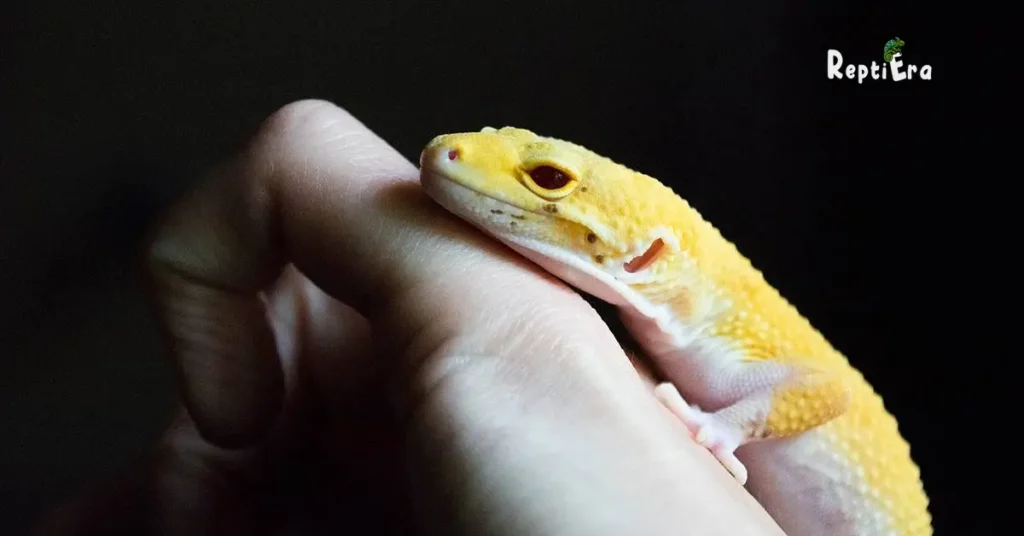
A common reason that makes a leopard gecko bite is confusion where they mistake your hand for food. This animal might mistake your fingers for its feeding time delicacies, as they are insectivores who primarily eat bugs and see meals in anything that moves.
Ironically, your skin colour, whether pale or dark brown, hand can be mixed up with their food, a profound misunderstanding.
Note: Hand feeding can help build a bond but also leads to mistakes where your pet can’t blame you for the association. Their senses get hyperactive, and they might accidentally nip your finger. To avoid this mix-up, use tongs for feeding; it’s a bit tricky at first, but once you learn the right technique, it saves both you and your gecko from the struggle of misunderstanding.
Reason 2: You’ve Surprised Them
Nocturnal in the wild, leopard geckos spend their days sleeping to stay cool, becoming active at night to hunt and socialize. In captivity, they may adapt to a more diurnal sleeping pattern, being awake and active during the day. However, if they are in a deep sleep state or taking naps, and you pick up or startle them, it can be surprising for your pet and lead to unwanted injuries.
Their first instinct when woken from sleep and feeling vulnerable is often a shock response, and they might act differently than usual. To avoid this, it’s recommended to approach them by moving slowly, giving them time to adjust and feel secure.
Reason 3: They’re Scared Or Stressed
In captivity, while we strive to make our pets feel safe and free from danger, leopard geckos can still get scared or feel stressed by their environment. They become agitated with changes in their habitat; even something as minor as a new rock or water dish can be a big deal and set off their anxiety.
When elements in their enclosure are introduced too suddenly rather than slowly and methodically, these sensitive reptiles can become jumpy and bitey. The root cause of a bite can often be traced back to long-term environmental issues, like incorrect temperature or humidity.
Ensuring these are perfect can help fix the problem, making your gecko happy, and allowing their body to relax and exit the fight or flight mode.
Reason 4: They’re Hurt
The last reason a leopard gecko might bite is if they’re hurt. Experiencing unexpected pain can cause them to lash out. Touching a sensitive area might trigger an involuntary response to pain, especially when being handled. While they often appear healthy, hidden illnesses common in pet reptiles, such as internal parasites causing stomach pain or respiratory infections, can be a cause.
In captivity, owners might not realize their pet is suffering until it starts biting. It’s important to figure out the underlying issue with the help of a vet to ensure their well-being and prevent future bites.
Also Read: WHY LEOPARD GECKO CLOSING HIS EYES
Reason 5: Socialization
The process of socializing reptiles, especially if you’ve adopted a leopard gecko from a breeder, involves time and patience. It’s advisable to avoid handling them for the first few weeks. Trying too soon can lead to feeling attacked. In the beginning, when you do pick up your gecko, think about how you’re doing it.
Grabbing from the sides of the body or from above and lifting by the tail are wrong approaches and can be misinterpreted as a predator move, triggering their instinct to protect themselves or escape. Gradual interaction paves the way for a proper relationship. Rough handling can scare them into a bite.
Tip: After about two weeks of just interacting through feeding, water changes, and cleaning poop, they become more adjusted to your presence in their enclosure. Slowly begin with gentle pets, keeping each session brief. As trust progresses, they become more familiar with you, and you can scoop them up to handle them more freely.
Reason 6: Temperament
Leopard geckos have unique personalities, and each gecko will respond differently when handled or interacted with. Some are more social and happy to be left alone, while others are more interactive.
As individuals, they often signal their displeasure when being held, which is evident in their body language, like waiving their tail back and forth or making a vocalization like a high-pitch screech. These are signs of protest, and if ignored, they might resort to biting. It’s important to make sure you understand when your geckos do not want to be held; they’re not automatically ready for interaction sooner than they show.
Recognizing their personality and heeding their warning can prevent docile creatures from exhibiting aggression or defensive behaviour that can stress out both the pet and the owner.
Reason 7: Mating
Housing both male and female leopard geckos together, especially among breeders, brings unique challenges. Summer, being the mating season, often sees a behaviour change. The more dominant gecko, when housed with another, can become territorial. Interrupting their courting process can provoke a protective response, especially if the female is gravid and feels the need to defend herself.
This perceived threat can lead to biting as a form of retaliation or defence. To prevent such instances, it’s advisable not to interfere with their courtship. Their attitude during this period is temporary and usually lasts only until they are returned to their individual enclosures.
Reason 8: Past Experiences
An owner who doesn’t properly care for their pet or those who adopt an adult gecko from a neglectful background may find it less receptive than the average leopard gecko. Such a gecko may be more alert and ready to bite at simple actions like removing the water bowl for cleaning.
If they have been traumatized or scared in the past, they might try to bite quickly, having learned this as a means of defence. When learning to care for a lizard with such a history, it’s important to take steps to provide a less stressful environment. Ensuring they feel comfortable and not defensive involves slow and calm movements to prevent startling them.
Also Read: WHY DO LEOPARD GECKOS CHIRP
What You Can Do to Avoid Leopard Gecko Bites
To avoid being bitten by your pet leopard gecko, it’s important to make them feel safe. Feeling unsafe can trigger their instinct to bite. Create a habitat that minimizes stress: choose a place with an atmosphere that’s both calm and secure. Ensure the lighting isn’t too bright as they can see glares, and avoid loud noises, keeping their exposure to limited rooms in your living space.
Using soothing voices and gentle hands when visiting their space is key. Additionally, other pets, like cats or dogs, should be kept away to maintain a peaceful environment for your gecko.
Move Slowly
To prevent a bite response from your gecko, it’s crucial to move slowly. Moving too quickly can trigger your pet’s natural prey response, mistaking your fingers, which they associate with what they hunt, for food. Keeping your hands steady and calm helps them remain calm and relaxed. Their enclosure should be a haven, free from exciting, fast-moving stimuli, to keep the chance of surprising them to a minimum. This careful approach will help cause fewer instances where they might feel compelled to bite.
Handle Them Regularly
Regular handling can significantly reduce the chances of bites and prevent your gecko from biting. It’s important not to rush this process; getting on the same page with your pet takes time. A gentle approach, like handling them once a day, ideally in the evening due to their nocturnal nature, can establish a daily routine.
Note: This practice helps teach them what to expect, creating a comfortable routine and schedule, thereby reducing stress and surprise. Gradually, they learn to trust you, minimizing those unexpected nibbles.
Use Tongs To Feed
As previously mentioned, hand-feeding can sometimes cause a gecko to bite. When feeding your pet, using tongs is a method to prevent bites and is preferable to free feeding. This approach is not only stimulating for them but also helps them associate your presence and voice with positive reinforcement during meals. Feeding with tongs is an art that requires practice, but when done correctly, it can become a pair of patience and skill that strengthens your bond with your gecko.
Watch Their Body Language
To prevent a bite, it’s key to watch your gecko’s body language. Leopard geckos are surprisingly expressive creatures, often giving away signals when they’re feeling stressed or threatened. You might notice them breathe more quickly, become flighty, or even vocalize. Some may stand on their hind legs as a sign of discomfort. Understanding these cues can help you respond appropriately to their needs and avoid stressful situations that could lead to biting.
What Does A Leopard Gecko Bite Feel Like?
If you’ve never been bitten by a leopard gecko and are wondering what it feels like, it’s less aggressive than you might think. Despite their small size, they do have teeth that are tiny yet sharp. A bite typically feels like a pinching sensation with a slight sting, a little more intense than a nip. Their jaws are relatively strong for their size, but it’s unlikely to cause bruising or any serious damage.
Related Post: DO LEOPARD GECKOS LIKE TO BE PETTED
Do Leopard Gecko Bites Hurt?
When a Leopard gecko, a species of gecko, bites, it can be surprising more than painful. Usually, you’re not expecting it, so the initial shock can catch you off guard. It does hurt a little bit, but it’s more of a quick pinch. Their small yet strong jaws can clamp down hard, but it’s unlikely to cause bruising or significant soreness. On the scale of animal bites, it’s not too bad.
Do Leopard Geckos Draw Blood When They Bite?
Geckos are generally gentle and have relatively weak bites, so it’s not common for them to draw blood. You might be surprised to find that they rarely break the skin. Despite their ability to catch and chew insects, their teeth are too small to pierce human skin, unless the gecko is particularly feeling frisky.
What To Do If Your Gecko Bites You
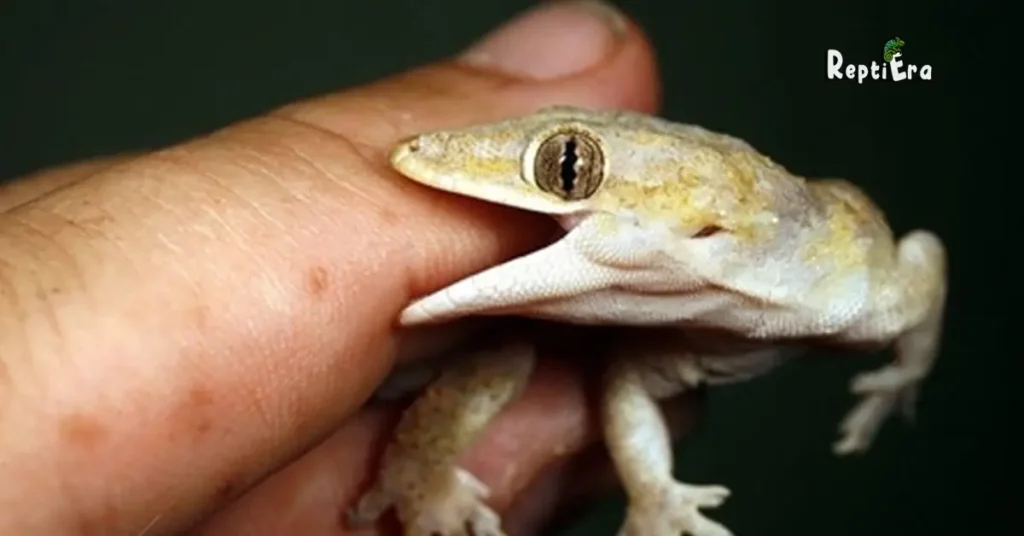
Should your gecko bite on you, rest assured, it’s really not serious! Let us guide you through some actions to follow when your gecko unexpectedly snaps at your hand next time.
Don’t Panic
The first thing to remember when your pet gecko bites is to stay calm and don’t panic. A gecko bite is rarely an emergency, so take a moment to think about your next steps. They might be accidentally lashing out rather than intentionally hurting you. Treating this as a creative moment to understand your pet better can be more beneficial than reacting with fear or agitation.
Clean Your Wound
If a gecko bite does break the skin, it’s crucial to clean your wound properly. Wash the area with antibacterial soap; if the bite seems stronger, you may consider using hydrogen peroxide. Remember, a gecko’s mouth can harbour bacteria, so thorough cleaning is essential to stay ahead of any potential infections.
Let Your Gecko Calm Down
Next, if you want to ensure your gecko’s well-being after it bites, it’s important to give them time to calm down. Try not to keep on handling them right after an incident. It’s better to set them inside their enclosure for a bit. This allows them to retreat to a familiar environment, especially if they’re feeling stressed or threatened. Allowing their body to wind down is the best way to prevent any further injuries.
Also Read: DO LEOPARD GECKOS CLIMB
Think About What Can Change Next Time
Finally, after an incident where your gecko felt the need to bite, it’s crucial to think about what you can change for next time. Figuring out what might be pushing your pet to take such an aggressive action is important. Knowing what is making them uncomfortable allows you to take steps to fix the issue. While there might not be an immediate solution, making headway in understanding your gecko’s needs will help prevent similar situations soon enough.
What Is A Leopard Gecko’s Normal Defense Mechanism?
In the wild, leopard geckos have unique defence mechanisms, and surprisingly, biting is not their first method of defence. They primarily use camouflage to live in rocky, desert-like terrains, blending seamlessly with the sandy surface and rocks to evade predators and survive in the harsh desert climate.
To avoid detection, they stay motionless; when detected, they might make chirping noises or puff up their throat to scare off a predator. A second method involves tail-dropping, known as caudal autonomy. They have control over the end portion of their body and can drop their tails in a sticky situation to make a quick getaway and escape with their life. The detached tail continues to move, distracting and entertaining the predator.
Note: This process can be stressful as they lose important fat stores and must regenerate a new tail, which never quite matches the original. In care, if they’re stressed, they might try to escape, showing the depth of their instinctual behaviours.
FAQs
Do Leopard Geckos Bite When Hungry?
Geckos often use biting as a defence mechanism, but in the situation where a leopard gecko is more about the body than hungry, thinking you’re eating their food can lead to bites. A hungry animal is likely to take a bite, whereas a full and satisfied one just because doesn’t mean they might not; the odds are just a little higher when they’re hungry.
Do Leopard Gecko bites cause any harm?
Leopard Gecko bites are less likely to harm, as they have a strong jaw but tiny teeth designed to eat insects, not to penetrate human skin. Rarely causing a deep cut or drawing blood, their bite pressure is more similar to a hard pinch sensation. When a gecko tries to clamp down on your finger, it may act as a shock, but the injury doesn’t register much beyond that.
Do Leopard Gecko bites hurt?
The term “Leopard Gecko bites” may sound scary, but in reality, it isn’t something owners should be overly worried about. Many pet owners often assume these bites are painful or bad, but in truth, they are not at all as alarming as they sound.
Why does a leopard gecko bite?
Number one reason is they might mistakenly view a finger as tasty prey, triggering their instant hunter’s instinct. Second, they may feel threatened by someone intruding into their territories, pushing them into a defensive mode.
What to do if a gecko bites you?
If bitten by a gecko and it has drawn blood, clean the wound thoroughly with soap and water, then apply an antiseptic or antibiotic ointment, and cover with a bandage. Keep an eye on it for signs of infection, like increased redness, swelling, or drainage.
Are leopard geckos aggressive to humans?
Leopard geckos are not aggressive by nature, which is a reason they are often recalled as ideal first-time reptile owners or children’s pets. However, a change in temperament can occur under stress or discomfort.
Is it safe to kiss your leopard gecko?
Ensure that children wash their hands thoroughly with soap and water immediately after handling the pet, and it’s important to not kiss your leopard gecko to maintain hygiene and safety.
Conclusion
In conclusion, understanding why leopard geckos bite is crucial for any owner or prospective buyer. These gentle reptiles usually do not exhibit aggressive behaviour towards humans. Their bites, often resulting from mistaking fingers for food, feeling threatened, or during mating season, are not inherently dangerous and are unlikely to cause serious harm. It’s important to remember that proper handling, respecting their space, and avoiding startling them are key to preventing bites. Regular cleaning of any minor wounds and observing for signs of infection are advised if a bite occurs. Overall, with the right care and understanding of their behaviour, leopard geckos make wonderful, low-risk pets that rarely resort to biting.


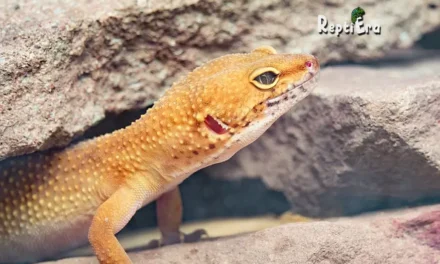
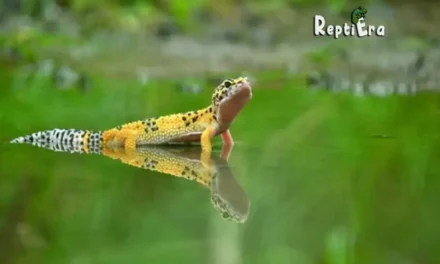
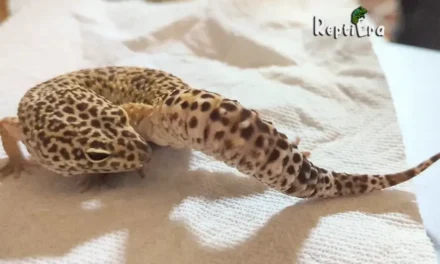
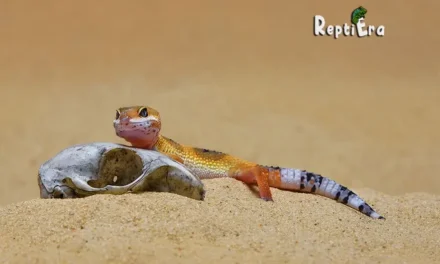
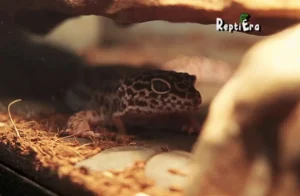

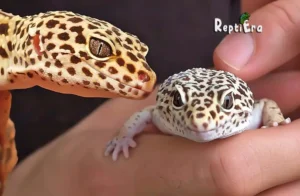
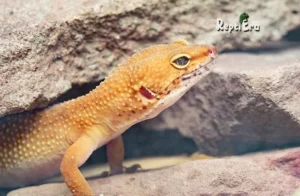
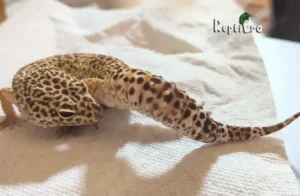
Thank you for your sharing. I am worried that I lack creative ideas. It is your article that makes me full of hope. Thank you. But, I have a question, can you help me?